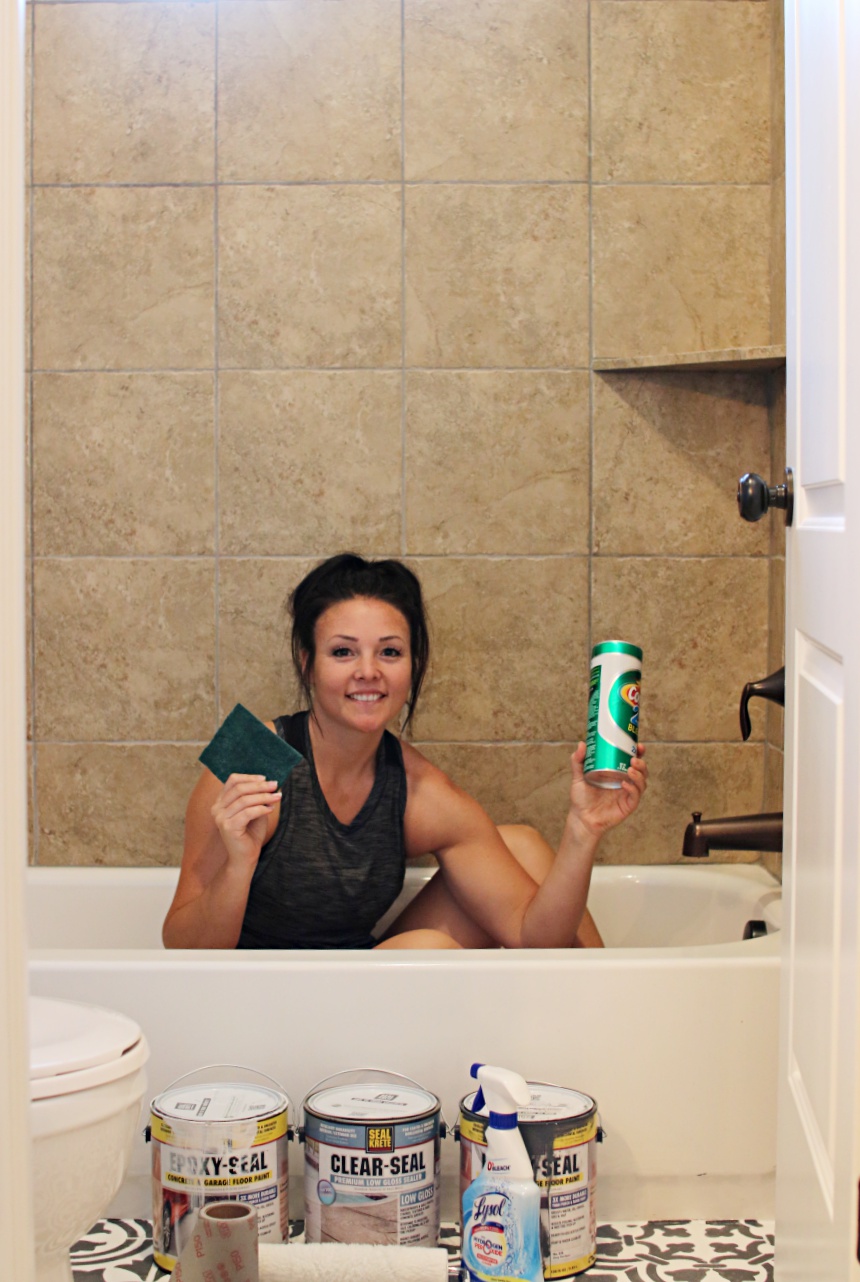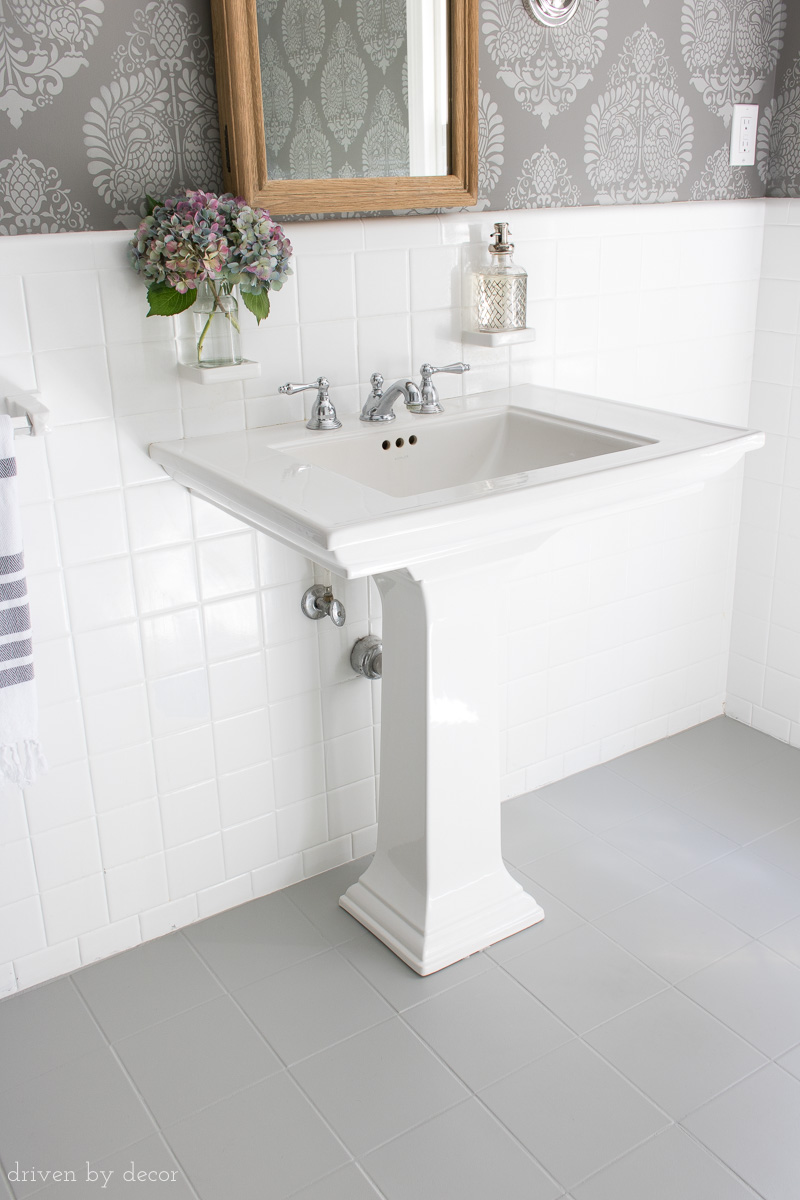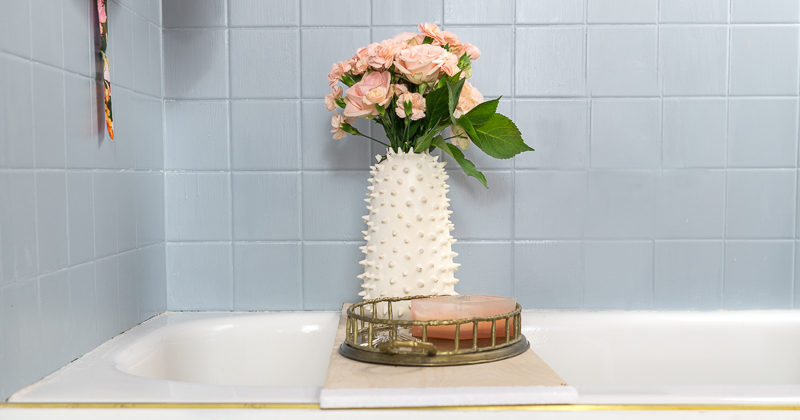Epoxy paint for bathroom tile has become a popular solution for homeowners looking to update the appearance of their tiled surfaces without the cost and labor of a full-scale renovation. This type of paint provides a durable and long-lasting finish that can withstand the high-moisture environment of bathrooms. Epoxy paint is formulated to adhere to ceramic, porcelain, and other tile materials, creating a smooth and waterproof surface that not only revitalizes the look of the bathroom but also adds a layer of protection to the tiles.
One of the primary advantages of using epoxy paint for bathroom tile is its exceptional durability. Epoxy coatings are known for their resistance to water, chemicals, and abrasion. In a bathroom setting where tiles are constantly exposed to water, humidity, and cleaning agents, the ability of epoxy paint to create a protective barrier is crucial. This durability ensures that the painted tiles maintain their aesthetic appeal over time, even in the face of daily wear and tear.

The application process for epoxy paint on bathroom tile involves thorough surface preparation. Cleaning the tiles to remove any dirt, grime, or soap scum is essential for proper adhesion. Sanding the tiles creates a textured surface that promotes better paint adherence. Applying a bonding primer further enhances the bond between the tile surface and the epoxy paint. Following these preparation steps diligently contributes to the longevity and effectiveness of the epoxy coating.
Epoxy paint for bathroom tile comes in a variety of colors and finishes, allowing homeowners to customize the look of their bathroom spaces. Whether opting for a classic white subway tile appearance or experimenting with bold and vibrant hues, epoxy paint provides a versatile canvas for creative expression. The glossy finish common in many epoxy paints not only adds a modern touch but also reflects light, contributing to a brighter and more open feel in the bathroom.

When considering epoxy paint for bathroom tile, it’s crucial to follow the manufacturer’s instructions for proper application. Typically, epoxy paints require precise mixing of the resin and hardener components, and applying the paint evenly ensures a smooth and uniform finish. Adequate drying time between coats is essential to achieve the desired durability and resistance. While the application process may require attention to detail, the result is a cost-effective and aesthetically pleasing transformation of the bathroom.
Epoxy paint for bathroom tile offers a practical and visually appealing solution for homeowners seeking to update their bathroom without the commitment of a full-scale renovation. The durability, water resistance, and customizable options make epoxy paint a suitable choice for enhancing both the aesthetic and functional aspects of tiled surfaces. When applied with care and following proper procedures, epoxy-painted bathroom tiles can provide a long-lasting and cost-effective alternative to traditional tile replacement, allowing homeowners to enjoy a refreshed and modernized bathroom space.
Refinishing ceramic tile in my bathroom (before and after)

How to Paint Shower Tile – Remington Avenue
DIY Painted Bathroom Floor
How I Painted Our Bathroomu0027s Ceramic Tile Floors: A Simple (and
How we Changed our Bathroom Tile for $150 bucks – Noting Grace
How to Paint Shower Tile – Remington Avenue
Bathroom Tile Paint Tutorial and Honest Review ⋆ Jeweled Interiors
LiveLoveDIY: Creative Ways To Update Your Kitchen Using Paint
Related articles:
- Bathroom Tile Remodel Pictures
- Decorative Bathroom Tiles Designs
- What Is The Best Thing To Clean Bathroom Tiles
- How To Steam Clean Bathroom Tiles
- Bathroom Tile Calculator Wall
- Easy Bathroom Tile Installation
- Bathroom Tiles In Lahore
- Bathroom Tiles Black And White Pattern
- Bathroom Tile Grout Removal
- Bathroom Tile Travertine
Epoxy Paint For Bathroom Tiles: A Comprehensive Guide
If you’re looking to give your bathroom a facelift, epoxy paint may be the perfect solution. Epoxy paint is a great option for painting bathroom tiles as it is highly durable, waterproof, and easy to apply. But before you jump in, here’s everything you need to know about using epoxy paint for bathroom tiles.
What Is Epoxy Paint?
Epoxy paint is a type of protective coating made from a combination of polymers and fillers that provide a hard, durable finish. It is available in a variety of colors and can be used on many different surfaces such as concrete, metal, wood, and tile. This makes it an ideal choice for painting bathroom tiles.
Benefits Of Using Epoxy Paint For Bathroom Tiles
Epoxy paint has several benefits when used on bathroom tiles. First, it provides a high-gloss finish that is waterproof and highly resistant to stains and scratches. This makes it ideal for use in high-traffic areas like bathrooms. Additionally, epoxy paint is easy to apply and requires minimal preparation. It can also be applied directly to old tile surfaces without the need to strip or sand them down first. Finally, epoxy paint is available in a variety of colors so you can find one that matches your existing decor.
How To Apply Epoxy Paint To Bathroom Tiles
Applying epoxy paint to bathroom tiles is relatively simple. Start by removing any existing grout or caulk from the area where you’ll be applying the epoxy paint. Next, clean the tile surface with soap and water or specialized cleaners made specifically for cleaning tile surfaces prior to painting. Once the surface has been cleaned and dried completely, apply a coat of primer to ensure better adhesion of the epoxy paint. Allow the primer to dry before applying two coats of epoxy paint with a brush or roller. Allow each coat of epoxy paint to dry completely before applying the next coat. Finally, seal the painted area with an acrylic sealer for added protection.
How long does epoxy paint last on bathroom tiles?
When applied correctly, epoxy paint can last up to 10 years on bathroom tiles without needing to be replaced. However, this may vary depending on factors such as how often the tiles are exposed to water or other elements that may cause wear and tear over time.
Does epoxy paint require special cleaners?
No, standard household cleaners such as soap and water should be sufficient for cleaning painted bathroom tiles with epoxy paint. However, it’s important to avoid abrasive cleaners as they may damage the painted surface over time.
Is there any special maintenance required for painted bathroom tiles?
Painted bathroom tiles should be wiped down regularly with a damp cloth or other soft cloths in order to keep them looking their best over time. Additionally, it’s important to check periodically for any signs of wear or damage such as cracking or peeling that could indicate that the painted surface needs to be touched up or replaced altogether if necessary.
What type of primer should I use with epoxy paint for bathroom tile?
For best results, you should use a high-quality epoxy primer specifically designed for tile. This type of primer will provide superior adhesion and ensure the epoxy paint will stick to the tile.
What is the best way to apply epoxy paint on bathroom tiles?
The best way to apply epoxy paint on bathroom tiles is to first thoroughly clean the surface of the tile, making sure to remove all dirt, dust and debris. Next, lightly sand the tile to create a rough surface for better adhesion. Then, use a high-quality brush or roller to apply the epoxy paint evenly and in thin layers, allowing it to dry completely between coats. Finally, seal the painted tiles with a clear sealant for added protection.
What type of surface is best for applying epoxy paint to bathroom tiles?
A smooth, non-porous surface is best for applying epoxy paint to bathroom tiles. The surface should be clean and free of dust, dirt, grease, oil and other contaminants. Additionally, any existing grout or caulk should be removed prior to painting.
What type of preparation is needed before applying epoxy paint to bathroom tiles?
Before applying epoxy paint to bathroom tiles, the surface must be thoroughly cleaned and degreased. Any old sealants or coatings must be removed with a chemical stripper, and any cracks, chips, or other damage must be repaired. The tiles must then be sanded and wiped down with a damp cloth to remove any dust. Finally, a primer should be applied for better adhesion of the epoxy paint.
What type of surface preparation is necessary before applying epoxy paint to bathroom tiles?
Before applying epoxy paint to bathroom tiles, the surface must be thoroughly cleaned and degreased. All dirt, grime, and oils should be removed using an approved cleaner or degreaser. The tiles should then be lightly sanded and wiped down with a damp cloth to remove any dust. Finally, the surface should be allowed to dry completely before applying the epoxy paint.






